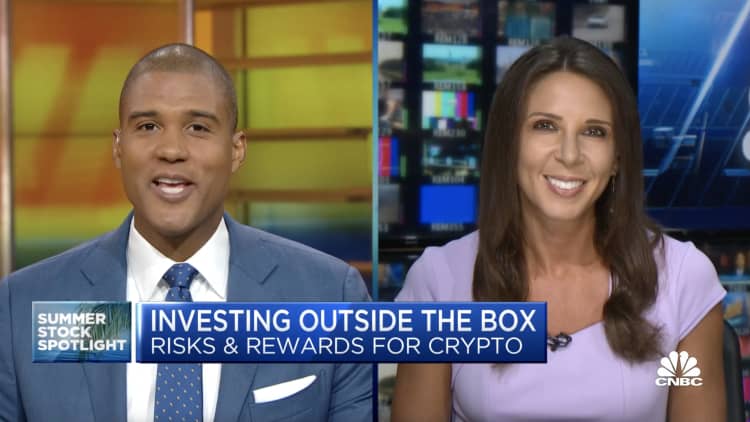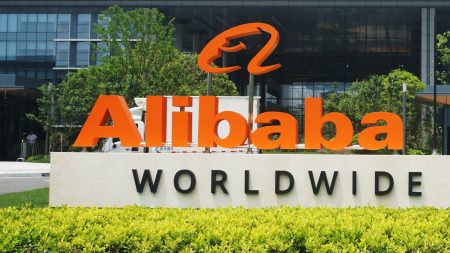Crypto winters don’t scare Kevin Zhang, who has been in the business of mining bitcoin for ten years. He’s lived through a few bear markets in the last decade, but no matter where he has set up shop — the U.S., Sweden, the Republic of Georgia, and China — he’s survived every one. In fact, it is precisely when things look most grim for the sector that Zhang typically doubles down.
In 2013, for example, China banned bitcoin for the first time. The world’s largest cryptocurrency immediately began to crash, and it was a slow bleed down in price for the next few years. As a wave of Western companies went bankrupt, Zhang decided to jump into mining.
“I saw an opportunity to leverage my Chinese language skills and cultural background to become one of the earliest and largest overseas customers of Chinese ASIC manufacturers,” said Zhang, who was born in America but spent his early childhood in Beijing and Shenzhen.
For the next four years, he sourced gear and institutional knowledge from China, ultimately scaling up a site in Montana to become the largest bitcoin mining facility in North America. Zhang has since brought that same cavalier attitude to Foundry, a mining firm tucked under Barry Silbert’s crypto empire.
In May 2020, bitcoin miners suffered two big blows: Much of the world shut down as Covid cases spiked and the most recent halving had just slashed the mining reward from 12.5 to 6.25 bitcoin per block mined. Zhang and the team at Foundry shrugged off the double whammy of blackswan events and spent hundreds of millions of dollars on its mining business, deploying tens of thousands of machines. By Nov. 2021, bitcoin hit an all-time peak of nearly $70,000.
But the stakes are higher this time around.
Bitcoin miners are barreling toward the “halving” — a major market-making event that some fear will be a death knell to many in the industry. It happens roughly every four years and refers to an inflation-curbing schedule baked into bitcoin’s code where the reward for mining a new block of transactions gets cut in half. Historically, it also coincides with the start of a bull run in the price of cryptocurrencies.
Whereas traders eagerly await the halving, hoping for a potential spike in bitcoin’s price, it represents a direct hit to revenues for miners, as they will receive 50% less bitcoin for every block they verify. In a capital-intensive industry with already tight margins, the reduced reward has the potential to prove apocalyptic for some operators.
“This is the ultimate test for miners,” said Zhang, Foundry’s senior vice president of business development. “Some may not make it through; some may. But I feel confident that if they work with us, and work with other strong actors, they may have a good chance to survive this.”
When the halving takes effect in Apr. 2024, the reward for miners will drop to 3.125 bitcoin, or around $83,000. By comparison, the first blocks of bitcoin mined in 2009 carried a reward of 50 bitcoin.
Without a commensurate surge in bitcoin’s price to counterbalance the diminished block rewards, many mining outfits — especially those burdened by rising energy costs, paying down on machines bought at peak pricing in 2021 — could get obliterated overnight.
But rather than seeing the 2024 halving as an extinction-level event, Foundry is expanding its operations — diving into machine sales, on-site deployment, and logistics.
FoundryX is a marketplace for buying and selling miners, both new and used — while their recently unveiled logistics arm deals in the deployment and shipment of miners across state lines and international borders. Managed site services is another program newly debuted where, for its U.S. customers, Foundry will help staff and manage miners on-site.
“Foundry is in this for the long haul,” said Zhang. “We’re taking a long-term bet on bitcoin and on the fact that bitcoin mining will survive and will bounce back even stronger.”
After China launched a fresh campaign against bitcoin mining in 2021, much of the industry migrated west to the U.S. Since then, some states have battled it out to attract mining companies, while others have actively legislated against them.
The controversy goes to energy consumption. Mining at-scale involves data centers packed with highly specialized computers that crunch math equations in order to validate transactions and simultaneously create new tokens. It requires expensive equipment, some technical know-how, and a lot of electricity. Whereas places like Texas and Wyoming welcome the trade, New York lawmakers have created rules designed, in part, to keep miners out.
A mining pool lets a single miner combine its hashing power with thousands of other miners all over the world. Even though some miners opt to hide their geographic footprint with a virtual private network, pools still function as a useful gauge of the general geographic spread of the mining industry.
Foundry opted to show states even with small amounts of hashrate — an industry term used to describe the computing power of all miners in the bitcoin network — to demonstrate that mining is happening across the country on the Foundry USA Pool.
The new data also confirms that Texas has cemented its position as the crypto capital of the United States, as miners flock there for abundant clean energy and a permissive regulatory environment.
Texas made up 8.43% of the hashrate in the U.S. as of the end of 2021, and that percentage has jumped to 28.50% as of July 27, 2023 — though Foundry notes that the data was aggregated during a period of heavy curtailment in July, so Texas’s percentage of actual hashrate is even greater than what’s reflected on their latest map. Zhang added that Texas’s growth in Foundry’s map also had to do with the fact that the firm took on more clients there in the past two years.
Given that the U.S. is currently the world leader in terms of its share of the collective hashrate of the bitcoin network, that makes Texas the bitcoin capital of the world.
Texas has grown to dominate bitcoin mining partly because of support from local authorities and the operator of the Texas energy grid, ERCOT. ERCOT has historically struggled with fluctuating energy prices and sporadic service, so it strikes deals with flexible energy buyers like bitcoin miners to help keep excess energy online during low-demand cycles, then offers incentives for miners to stop their work, allowing that excess energy to flow back to the grid when demand is high.
Research from Castle Island Venture’s Nic Carter and a collective of other industry practitioners including Lancium’s Shaun Connell and the former interim chief of ERCOT, Brad Jones, found that over the past decade, instances of negative pricing surged considerably, accounting for more than 6% of all hours in 2022 across wholesale markets in the U.S. The research paper went on to note that negative priced power may increase further in Texas, in particular, given that the state is rapidly onboarding wind and solar to its grid. Those conditions are ideal for bitcoin miners.
“All you have to do is pay the miners slightly more than what they would have made mining for bitcoin that hour,” said bitcoin mining engineer Brandon Arvanaghi, who now runs Meow, a company that enables corporate treasury participation in crypto markets. Arvanaghi calls the setup a “a win-win.”
For years, Riot has been powering down operations at its Rockdale mine, about an hour from Austin, to help ease the burden on the state’s grid. In July, for instance, bitcoin miner Riot Platforms raked in more than $31.7 million to keep its mining operations offline — $24.2 million came from energy sold back to the ERCOT grid and the other $7.4 million came via demand response credits.
“August was a landmark month for Riot in showcasing the benefits of our unique power strategy,” said Jason Les, CEO of Riot, in a recent press release. “The effects of these credits significantly lower Riot’s cost to mine Bitcoin and are a key element in making Riot one of the lowest cost producers of bitcoin in the industry.”
Even during the bear market, Texas miners are building out, buying new sites and fresh fleets of hardware.
Riot Platforms, for example, has aggressive expansion plans in place in other parts of the state, including Navarro and Milam counties.
“Riot’s ability to source such a significant expansion opportunity in Texas exemplifies the Company’s partnership-driven approach with all stakeholders, including the Company’s business partners, ERCOT, and all levels of government, to commit to sustainable economic development,” Les said of the expansion plan.
Bitdeer, which operates its biggest facility four-tenths of a mile down the road Riot’s mine in Rockdale, is also in expansion mode. The mining company was spun off from Chinese bitcoin mining giant Bitmain and went public via SPAC earlier this year.
Meanwhile, Cipher Mining purchased 11,000 new mining machines for its facility in Odessa, Texas, while Foundry has acquired mining sites from the bankruptcy estate of Compute North in Minden, Nebraska, and Big Spring, Texas.
Elsewhere in the U.S., previous leaders in bitcoin mining saw their influence wane.
In the last two years, Foundry’s dataset shows that Georgia — a miner-friendly state offering competitive pricing on electricity, as well as a mix of renewable power sources including solar and nuclear, has seen its share of the U.S. hashrate plunge from 34.17% to 9.64%. The drop was driven by a combination of factors, including Texas’s growth overall and Foundry’s expanding operations in particular, as well as by measurement differences — one large miner in the state declined to have their activity included in this year’s map.
Though its growth was stagnant compared to the previous study, New York’s share of the U.S. hashrate declined from 9.53% in 2021 to 8.75%, driven mainly by the state’s moratorium against new miners issued in Nov. 2022.
Other mining winners that showed notable growth during the period included New Hampshire and Pennsylvania, while Nebraska, North Carolina, Kentucky, Oklahoma and Washington all saw significant drops.
Despite the plunge in bitcoin valuations since 2021, as well as increasing regulatory scrutiny from the Securities Exchange Commission and other agencies looking to regulate some cryptocurrencies like securities, the total U.S. hashrate — a proxy for industry competition — has more than doubled since the end of 2021.
According to an analyst note from JPMorgan Chase on Sept. 1, the bitcoin network’s overall hashrate set a record high for the eighth consecutive month in August. Foundry says the rise is driven in part by institutions entering the space.
JP Morgan researchers also note that the mining business has gotten less lucrative — miners make an average of $66,400 per day per exahash of mining capacity, versus nearly $342,000 at bitcoin’s peak in Nov. 2021.
Meanwhile, the aggregate market cap of the 14 U.S.-listed miners tracked by the bank has plunged below $10 billion. Riot was the biggest loser in August, down 39%, while Bitdeer was the biggest winner, up 30%.

Read the full article here









